The Saengerbund Clubhouse: Parties, Concerts, and Bowling
“The Germans have the reputation, perhaps above all others, of knowing how to have a good time in life, and the members of the Saengerbund seem to prove the truth of the statement.”
– The Evening Star, May 2, 1896
The Washington Saengerbund was officially established on April 20th, 1851, and has gone on to become the longest enduring German singing society in the District. From 1874 to 1893, the society met above Charles “Baldy” Dismer’s restaurant at 708 K St. NW in Mount Vernon Square.[1] During that time, the organization enjoyed exponential growth, consisting of nearly 500 members both active and passive by 1894. This influx of members created an evident need for the society to have its own clubhouse, and this dream became a reality in November 1893 when the Saengerbund purchased a house at 314 C Street NW.
The 27 ½ by 180-foot, four-story brownstone house, along with a two-story rear brick structure, was built on C Street in 1870 at an estimated cost of $30,000.[2] The Saengerbund purchased the home for $25,000 at auction from Mr. D. F. Murphy, the official stenographer of the United States Senate, and they officially became the owners on December 1, 1893.[3] Initial plans to renovate the 19 room private residence into a functional music hall and clubhouse included installing electric light, as well as the “introduction of steam heat, electrical appliances, and like conveniences.”[4]
Further renovation plans designated each floor of the main building for different purposes. The ground floor became club rooms and parlors, decorated with a $1,000 Steinway piano, a $1,200 imported Brussels carpet, Bohemian crystal chandeliers, oil paintings, marble busts of prominent composers, and a reception area where club members could “sit and quaff their beer or Rhine wine at their ease or enjoy a capital meal cooked in the German style.”[5] The second floor, built to host a new conservatory of music, also contained two sitting rooms, one reserved for the “convenience of the ladies” and the other used for playing chess and cards. The third floor contained dedicated space for the singing society itself, with a large practice hall used both for rehearsals and business meetings, a fully indexed music library, and every trophy won in past singing competitions.[6] The fourth and final floor remained for building employees and the clubhouse janitor. In the basement would be a kitchen and ten-pin bowling alley for club members to use, and the rear building was slated to eventually be renovated into a summer garden and private theatre where the singing society would be able to host concerts and other performances.[7]
The renovations and redecoration occurred throughout the next month and a half, and on the evening of January 15, 1894, “the ample quarters at 314 C street were thrown open for inspection. From cellar to attic the house [was] complete and the decorations harmonious and elaborate.”[8] Hundreds of club members and their spouses gathered in the clubhouse for the vibrant opening party celebrating the new permanent home of the Saengerbund. “On the second floor, refreshments were provided and a constant swarm of ladies and gentlemen availed themselves of the opportunity to eat, drink, and be merry.”[9] Guests later crammed into the parlor to hear a full program of recitations and music. Saengerbund President John Waldman gave an address in German, Frank Claudy, the society’s poet laureate, delivered an original poem about the night’s festivities, F. Altrup gave a recitation, J.J. Fischer performed a baritone solo, Mrs. J.W. Collins sang a soprano solo, and the prominent 19th century D.C. ensemble, Henry Donch’s orchestra, gave a performance as well.[10] The program “was enjoyed by those who were able to get within earshot, while the less fortunate ones contented themselves with looking through the different rooms in the building.”[11] While this affair may have been the “formal” opening, according to the Evening Star, “there was no effort at formality. Every one present felt at home and wandered over the house at pleasure.”[12]
In December 1895, the Saengerbund obtained a building permit to renovate the addition behind the C Street clubhouse, which cost $6,000 and would contain a dedicated music hall and bowling alley.[13] The 90 by 27-foot addition was completed in April 1896, and at the “south end [was] an elevated stage about twenty feet deep. The hall, with tables and chairs, [would] seat about 400, and without the tables [would] accommodate half as many more.”[14] In the basement underneath the hall were two, full regulation size bowling alleys made of maple, which members of the Saengerbund bowling team used every Monday night.[15] Shortly after these new alleys were built, the Saengerbund team joined the District Bowling League and competed against other local bowling teams for the next several years. In fact, the Saengerbund team performed quite well in these district league competitions, armed with several seasoned bowlers who had played on other league teams before, as well as the good fortune of laying claim to the Saengerbund bowling alleys for practice, which were the “newest standard alleys in the city and [were] among the best and truest in construction.”[16]
With the new clubhouse addition finished and decorated by early May 1896, the Saengerbund held another extravaganza to celebrate. The “ladies of the Saengerbund” spent weeks organizing and planning for an invitation-only, week-long festival, meant not just to commemorate the new clubhouse, but also to mark the leap year. The “thoroughly informal” festival began at 8pm on Monday, May 4, 1896 with music from Donch’s Orchestra, a performance from the Saengerbund singers, speeches in both German and English, and a visit from Barron Max von Thielmann, German Ambassador to the United States.[17] The hall was decorated from “one end to another” with colored streamers and bunting in both American and German colors.[18] In addition to nightly musical performances, booths filled with candies and clothing for sale, and hours of dancing, the Saengerbund used its new bowling alley to hold a festival-long bowling competition in which the person with the most pins down at the end of the festival would win a gold medal.[19] The clubhouse was taxed to maximum capacity each night of the week as “constant streams of people,” club members and guests alike, filled the C Street property with celebration and merriment.
The Washington Saengerbund continued to occupy its C Street clubhouse, hosting weekly dinners, concerts, bowling matches, and sommergarten parties, until about 1920 when the organization faced financial hardships due to a failing economic climate and prohibition— interestingly, much of the society’s funding came from clubhouse beer sales.[20] Shortly after, the clubhouse was seized by the government through eminent domain and torn down.[21] But, despite losing their clubhouse and with the exception of only a few lost years post-prohibition, the Saengerbund has persisted continuously through the present day, overcoming countless historic obstacles and preserving German culture and music in Washington for over 170 years.
Footnotes
- ^ “1901_04_20-50_jahre.pdf,” accessed October 17, 2020, https://www.saengerbund.org/documents/1901_04_20-50_jahre.pdf.
- ^ “NEW CLUB HOUSE AND MUSIC HALL: Building Plans of the Washington Saenger Bund The Society’s Recent Purchase.,” The Washington Post (1877-1922); Washington, D.C., December 1, 1893, http://search.proquest.com/hnpwashingtonpost/docview/138953030/abstract….
- ^ “NEW CLUB HOUSE AND MUSIC HALL.”
- ^ “Of Interest to Builders,” The Washington Post (1877-1922); Washington, D.C., November 10, 1893, http://search.proquest.com/hnpwashingtonpost/docview/138919288/abstract…; [4] “1851--THE SAENGERBUND--1894: WASHINGTON’S GERMAN SINGERS.,” The Washington Post (1877-1922); Washington, D.C., November 4, 1894, sec. General, http://search.proquest.com/hnpwashingtonpost/docview/139095010/abstract…
- ^ “1851--THE SAENGERBUND--1894.”; “LEAP YEAR FESTIVAL. Under the Auspices of the Washington Saengerbund. OPENING OF THE NEW MUSIC HALL,” Evening Star, May 2, 1896, https://infoweb.newsbank.com/resources/doc/nb/image/v2%3A13D5DA85AE05A3….
- ^ “LEAP YEAR FESTIVAL. Under the Auspices of the Washington Saengerbund. OPENING OF THE NEW MUSIC HALL.”
- ^ “NEW CLUB HOUSE AND MUSIC HALL.”
- ^ “WASHINGTON SAENGERBUND: This Popular Organization Opens Its New Club House,” Evening Star, January 16, 1894, https://infoweb.newsbank.com/resources/doc/nb/image/v2%3A13D5DA85AE05A3….
- ^ “NEW HOME OF THE SAENGERBUND.: Formal Opening Last Evening of the Club House on C Street.,” The Washington Post (1877-1922); Washington, D.C., January 16, 1894, http://search.proquest.com/hnpwashingtonpost/docview/139463784/abstract….
- ^ “NEW HOME OF THE SAENGERBUND.”
- ^ Ibid.
- ^ “WASHINGTON SAENGERBUND: This Popular Organization Opens Its New Club House,” Evening Star, January 16, 1894, https://infoweb.newsbank.com/resources/doc/nb/image/v2%3A13D5DA85AE05A3….
- ^ “A New Music Hall for Washington.,” The Washington Post (1877-1922); Washington, D.C., December 31, 1895, http://search.proquest.com/hnpwashingtonpost/docview/139529518/citation….
- ^ “LEAP YEAR FESTIVAL. Under the Auspices of the Washington Saengerbund. OPENING OF THE NEW MUSIC HALL.”
- ^ Ibid.
- ^ “Saengerbund Bowling Club,” Washington Times, October 11, 1896, https://www.newspapers.com/clip/1042829/jorss-sangerbrund-and-bowling/.
- ^ “GERMANS’ FESTIVAL NIGHT: The Saengerbund Observes the Opening of a New Hall. The German Ambassador and Bareness von Thielmann Attend, and the Structure Is Gayly Decorated with Patriotic Colors.,” The Washington Post (1877-1922), May 5, 1896, http://search.proquest.com/hnpwashingtonpost/docview/143765900/abstract….
- ^ “GERMANS’ FESTIVAL NIGHT.”
- ^ Ibid.
- ^ “Washington Sängerbund,” accessed September 17, 2020, https://www.saengerbund.org/history.html.
- ^ “Meet D.C.’s Last Remaining German Singing Club,” DCist (blog), accessed October 5, 2020, https://dcist.com/story/17/05/04/german-singing-club/.


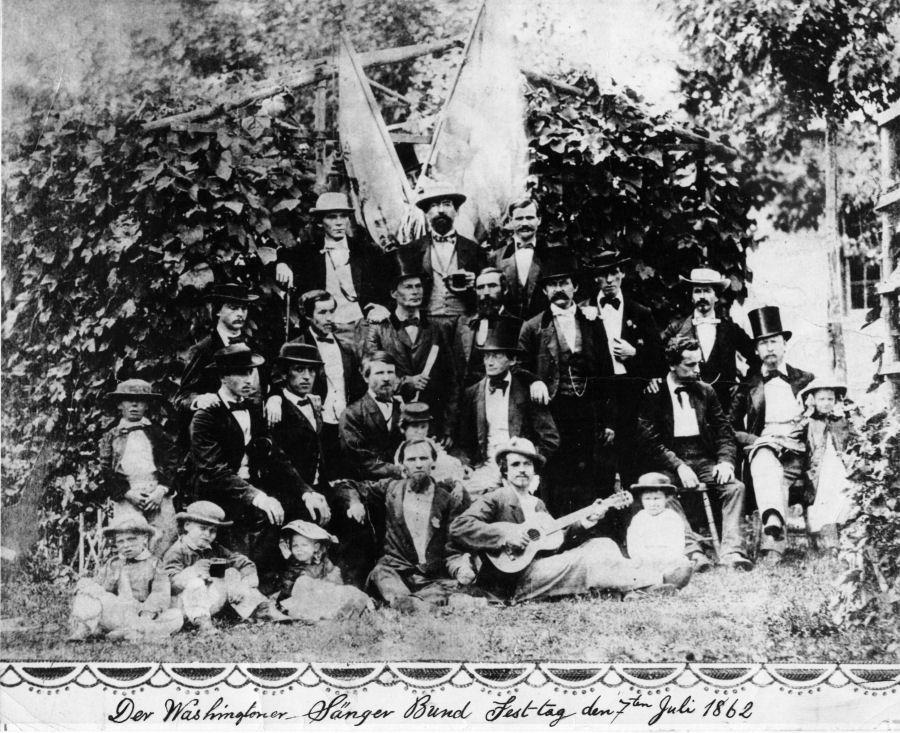
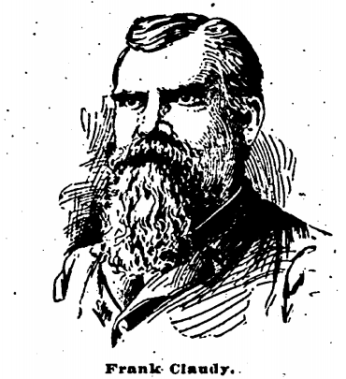
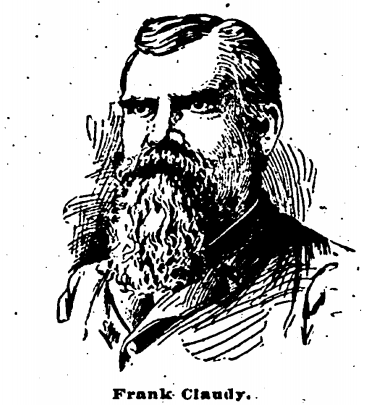
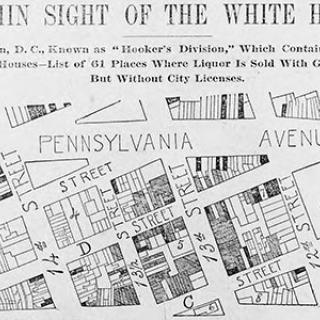
![“Washington D.C., Library of Congress 1897-1910.” (Photo Source: Library of Congress) Detroit Publishing Co., Copyright Claimant, and Publisher Detroit Publishing Co. Washington, D.C., Library of Congress. District of Columbia United States, Washington D.C, None. [Between 1897 and 1910] Photograph. https://www.loc.gov/item/2016796190/](/sites/default/files/styles/crop_320x320/public/4a28645v.jpg?itok=WxMtjKxx)
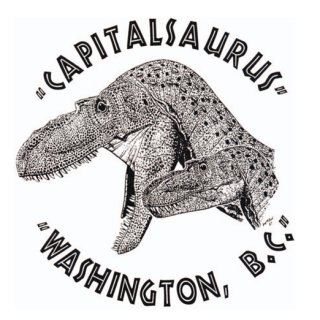
![Sketch of the mythical fuan by Pearson Scott Foresman. [Source: Wikipedia]](/sites/default/files/styles/crop_320x320/public/2023-10/Goatman_Wikipedia_Faun_2_%28PSF%29.png?h=64a074ff&itok=C9Qh-PE1)












